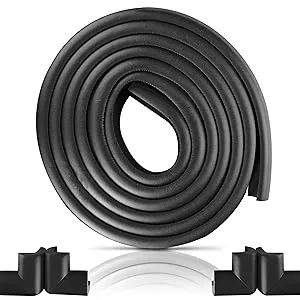Choosing the Right Bottom Seal Bead Type for Your Garage Door
Understanding Garage Door Bottom Seal Bead Types
A garage door is not just a barrier to your vehicle and tools; it’s an important component of your home’s overall security and energy efficiency. One often overlooked part of a garage door system is the bottom seal, specifically the seal bead, which plays a crucial role in protecting your garage from the elements. In this article, we will explore the different types of garage door bottom seal beads, their functions, and how to choose the right one for your needs.
What is a Garage Door Bottom Seal?
The bottom seal of a garage door refers to the rubber or vinyl component attached to the bottom edge of the door. Its main function is to create a tight seal against the ground when the door is closed, preventing drafts, moisture, pests, and debris from entering the garage. Over time, these seals can wear out, crack, or become less effective, leading to a need for replacement.
Types of Garage Door Bottom Seal Beads
There are several types of bottom seal beads available on the market, each with its unique features and benefits
1. T-Type Seals Named for their shape resembling the letter “T,” these seals are designed to fit into a channel that holds them in place. They provide a solid seal against drafts and can accommodate slight unevenness in the garage floor. T-type seals are popular due to their durability and ease of installation.
2. U-Type Seals Similar to T-type seals but shaped like a “U,” these seals fit snugly into the bottom of the door. They capture water and prevent it from pooling under the door, making them ideal for areas with heavy rainfall. U-type seals can endure harsh weather conditions but may require proper alignment for maximum effectiveness.
3. Flat Seals Designed for a more straightforward application, flat seals are simply strips of rubber or vinyl that adhere to the bottom edge of the garage door. While they are easy to install, they might not provide the same level of insulation as other seal types. Flat seals are often used in less severe climates or for less frequently used doors.
garage door bottom seal bead type

4. Flange Seals These seals include flanges that extend to the sides of the door, providing additional coverage against wind and rain. Flanged seals create a barrier that enhances the insulation properties of the garage door, making them suitable for homes in extreme weather areas.
Choosing the Right Seal Bead
When selecting a bottom seal for your garage door, consider several factors
- Material Look for seals made of high-quality rubber or vinyl, as these materials offer flexibility, durability, and resistance to weathering.
- Size Measure the width of your garage door and the height to ensure the seal fits properly. Most seals can be trimmed to size for a perfect fit.
- Climate If you live in an area with severe weather conditions, consider investing in a more robust seal type (like U-type or flange seals) to provide additional protection.
- Installation Depending on your level of DIY expertise, you might choose a seal that is easy to install. Some seals come with adhesive backings, while others might require more advanced installation techniques.
Conclusion
The bottom seal on your garage door may seem minor, but it plays a significant role in maintaining your garage's comfort and security. Understanding the different types of bottom seal beads available can help you make an informed choice when replacing or upgrading your garage door seal. Regularly inspecting and maintaining your garage door seal is essential to ensure that it performs at its best, keeping your garage safe from the elements. If in doubt, consulting with a professional can provide additional insights tailored to your specific garage door and local climate conditions.
-
Under Door Draught Stopper: Essential ProtectionNewsJul.31,2025
-
Garage Door Seal and Weatherstrips for ProtectionNewsJul.31,2025
-
Edge Banding Tape for Perfect EdgesNewsJul.31,2025
-
Table Corner Guards and Wall Corner ProtectorsNewsJul.31,2025
-
Stair Nose Edging Trim and Tile Stair SolutionsNewsJul.31,2025
-
Truck Bed Rubber Mats for Pickup BedsNewsJul.31,2025
-
Window Weather Stripping for Noise ReductionNewsJul.29,2025